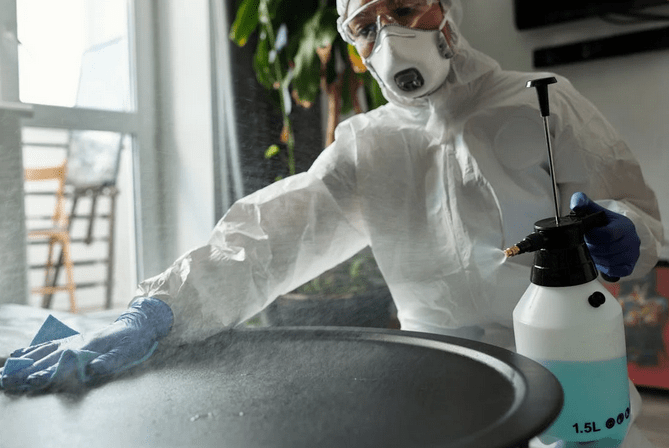In the aftermath of a crime, the cleanup process is not just about restoring physical spaces; it’s about restoring a sense of safety and normalcy for those affected. Modern crime & trauma scene cleanup efforts have been revolutionized by technological advancements, enabling quicker, safer, and more effective remediation of these sensitive environments. This article explores how technology has transformed crime scene cleanup, highlighting essential uses that underscore its importance in this critical field.
Advanced Cleaning Agents and Solutions

Technology has ushered in a new era of cleaning agents specifically formulated to effectively tackle biohazards and bodily fluids. These agents are potent against pathogens and environmentally friendly, minimizing the impact on surroundings. For instance, enzymatic cleaners break down organic matter at a molecular level, ensuring thorough decontamination without leaving harmful residues. Such advancements enhance cleaning efficiency and contribute to maintaining a safe and hygienic environment post-cleanup.
Robotics and Automated Systems
Robotic technologies have significantly transformed crime scene cleanup by reducing human exposure to hazardous materials. Robots with sensors and cameras can navigate complex environments, identify contaminants, and perform cleaning tasks autonomously. This improves safety for cleanup crews and ensures meticulous cleaning in hard-to-reach areas. Automated systems further streamline operations, from waste disposal to surface disinfection, allowing faster turnaround times without compromising quality.
Personal Protective Equipment (PPE)
The evolution of PPE in crime scene cleanup reflects technological advancements to enhance worker safety and comfort. Modern PPE integrates lightweight materials, ergonomic designs, and advanced filtration systems to protect against biohazards and airborne contaminants. Enhanced visibility and communication features further optimize crew coordination and safety protocols during cleanup operations. Technology-driven improvements in PPE ensure cleanup teams can operate confidently and efficiently in challenging environments.
Real-Time Monitoring and Analysis
Real-time monitoring technologies are crucial in assessing contamination levels and guiding cleanup strategies. Portable devices and sensors provide instant feedback on air quality, surface contamination, and hazardous substance presence. This data enables cleanup crews to make informed decisions, adjust cleaning protocols as needed, and ensure thorough decontamination of crime scenes. Integration of data analytics further enhances operational efficiency, allowing for precise resource allocation and response management.
Biohazard Decontamination Techniques

Technological innovations in biohazard decontamination have expanded the toolkit available to cleanup professionals. Techniques such as ozone treatment, UV sterilization, and plasma-based disinfection systems effectively neutralize pathogens and eliminate odors without relying on harsh chemicals. These methods accelerate the cleanup process and promote environmentally sustainable practices. By leveraging advanced decontamination technologies, cleanup teams can swiftly and thoroughly restore affected areas to a safe and habitable condition.
Technology continues to drive significant advancements in crime scene cleanup efforts, transforming how professionals approach and execute remediation tasks. From robotic systems that enhance safety and precision to advanced cleaning agents that ensure thorough decontamination, these innovations have a crucial role in safeguarding public health and restoring peace of mind to communities affected by crime. As technology evolve, so will the capabilities of crime scene cleanup, further improving efficiency, safety, and effectiveness in mitigating the aftermath of tragic events.…

